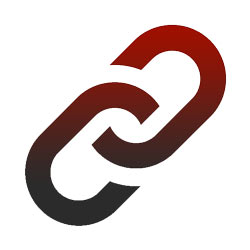Technical proposal from Kevin 'Fuzzy' Furry on the creation of a cost effective systems for the conservation of artworks containing technology.
KiboWorks LEDucation Links and Technical documents on LED Technology


0-10 V is one of the earliest and simplest electronic lighting control signaling systems; simply put, the control signal is a DC voltage that varies between zero and ten volts.
0-10V Control Protocol

DMX is a standardized protocol from the 1980s which has been adopted as a general protocol for decorative lighting. The data or protocol is transmitted over a wired RS485 network. The configuration and wiring of the network is extremely important. Less than perfect networks cause complex problems which are commonly mistaken as lamp or control system issues. Networking requires expert level experience, specialized tools such as testers, oscilloscopes and multi-meters. Poor integration will result in a system lifetime of issues and service calls.
General Overview about DMX-512 connectors and devices
United States Institute for Theatre Technology (USITT)
TIA/EIA-485 or RS-485 standard

LEDs, Light Emitting Diodes, have evolved from status indicators to mainstream lighting. Unlike the decade of 1990s, we now live with LEDs in all aspects of our lives. The LED is predicted to become the primary form of lighting in the years to come. Billions of dollars are invested each year to improve the technology. KiboWorks strongly recommends understanding the basics of the technology. The days of the incandescent light bulb are coming to an end.
All you could ask for about LED technologies
KiboWorks recommended reading for LED lifetime vs performance
These LED manufacturers we have used in the past with success. To the untrained eye LEDs may look the same, though they are not all the same quality or performance. Currently there is no recognized 3rd party certification entity which confirms a manufacturer´s quality and performance claims. Caveat emptor, Let the buyer beware, it is easy for manufacturers to confuse the buyer through tech talk and slight of spec. An engineer experienced with LEDs can easily read through the specifications and find the truths.
Nichia Corporation, the inventors of the blue and white leds.
Philips Lumileds, the strongest investor in high power leds.
Osram Opto, the widest variety of LED technologies in a single company.
Soraa, leading developer of solid-state lighting technology built on pure gallium nitride substrates, commonly referred to as GaN on GaN
Cree, chip provider to OEM package manufactures, strong high power line.
Bridgelux, manufacturer of large led array hyigh power modules.
Citizen Electronics, packing high power arrays using Nichia chips.
Everlight
Electronics, a strong provider for a wide variety of packages.

RESISTOR LED LIMITING - For applications with simple designs and reliable voltage supplies, resistor limiting is inexpensive. Low efficiency, inconsistent brightness and heat generation, are the most significant shortcomings of using resistors limiting versus linear or switching regulators. Today using resistors is limited to indicators and products where quality of light and efficient use of power is not an issue. The lighting industry has ceased using this solution in favor of regulated drivers. Projects which rely primarily on a lighting effect and not brightness can use resistors, such as, artwork.
More than you wanted to know about resistors and LEDs
LINEAR LED DRIVER - For applications with high input/output voltage difference, linear drivers are the most simple and inexpensive. Low efficiency and heat generation, are the two biggest shortcomings of using linear regulators versus switching regulators. These two things prevent the usage of linear devices in many applications, specially in those with low power consumption requirements.
Infineon Technologies application note 40W linear driver design.
OnSemi Implementation of compact low cost linear LED drivers
SWITCH MODE LED DRIVER - For applications with variable or high input versa LED voltage differential, switch mode drivers are best and reasonably inexpensive based on complexity. Frequency of circuit, inductor and capacitor size are the biggest issues of using switch mode regulators. If the cost and driver size can be supported, there is a switch mode driver for any application. This driver design provides highest efficiency and lowest heat generation.
Maxim's summary of LED driver technology
NXP/Philips expert level paper on switch mode drivers

The L Prize (aka the Bright Tomorrow Lighting Prize) is a competition run by the United States Department of Energy aimed to "spur lighting manufacturers to develop high-quality, high-efficiency solid-state lighting products to replace the common incandescent light bulb"

